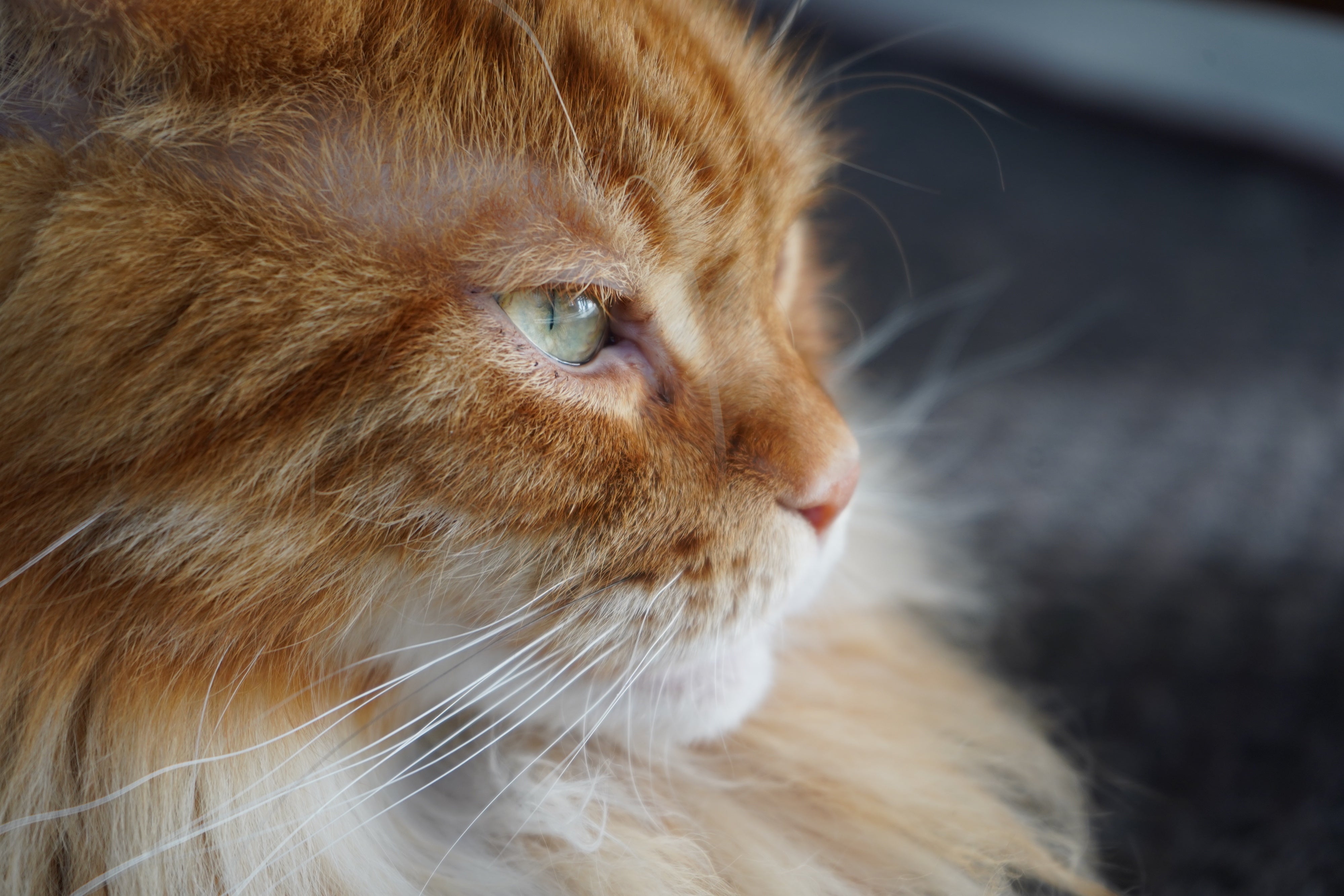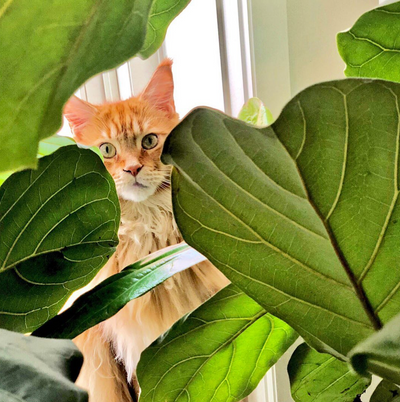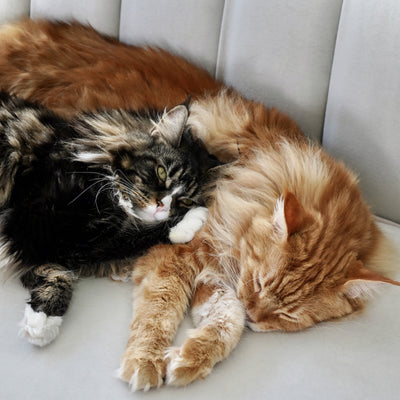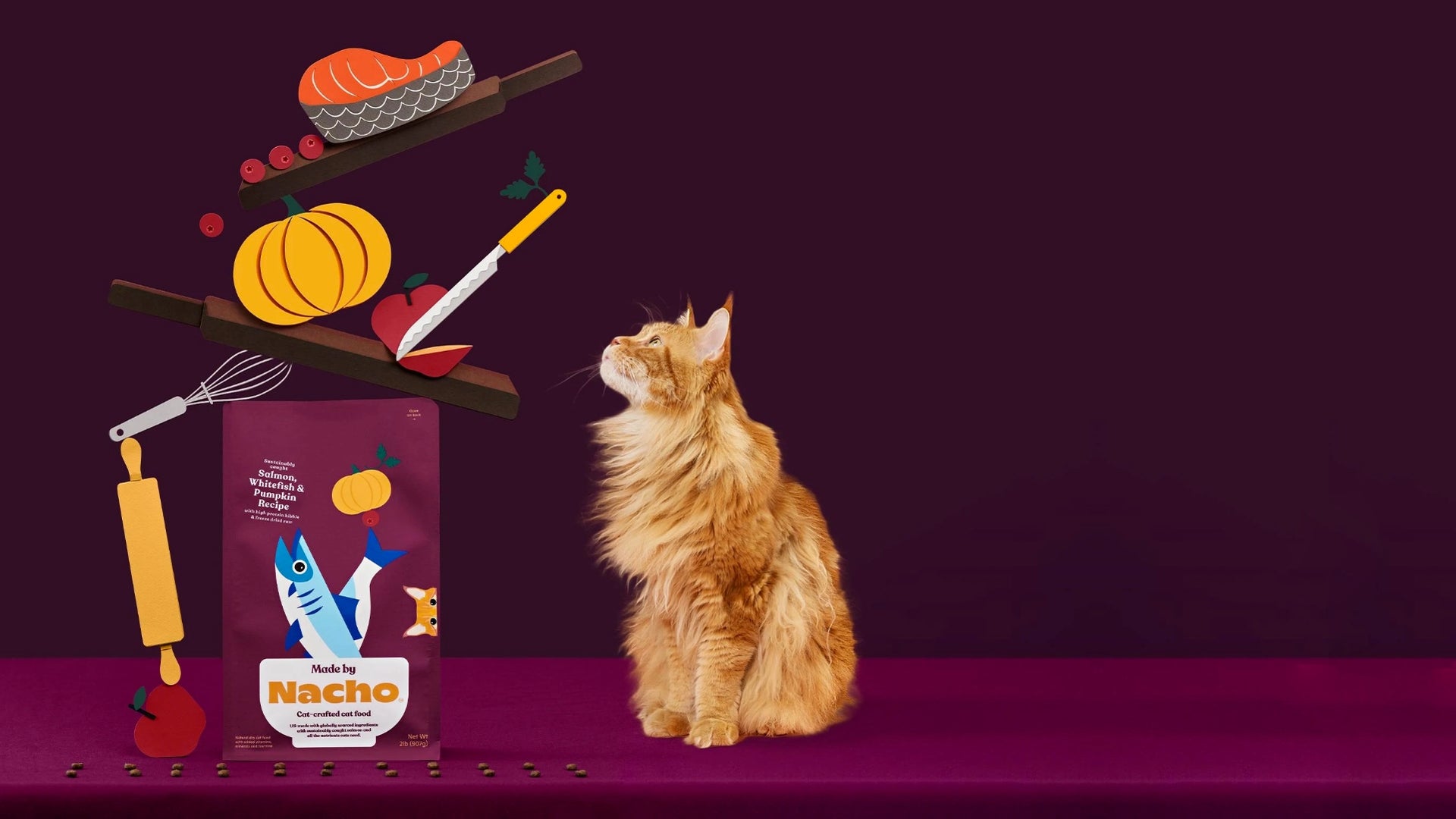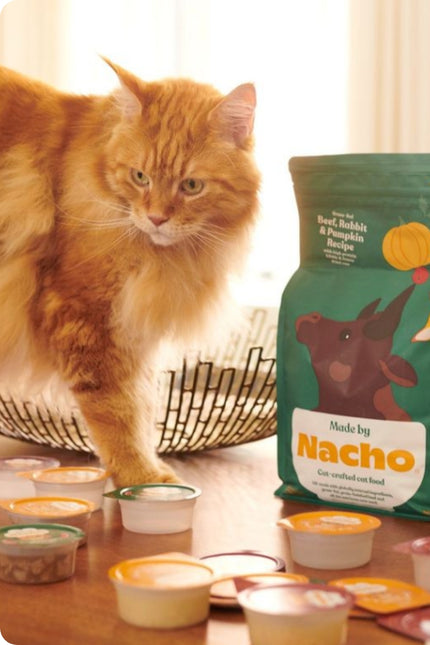Nacho Flay’s vet Dr. Katja Lang advice on how to keep our cats happy
In Well-Vetted, Katja Lang, DVM (aka Dr. Kibble) Nacho Flay’s lifelong vet and Made by Nacho’s veterinary consultant answers the #NachoCatPack’s frequently asked questions
Dr. Lang is the Chief Medical Officer at Heart of Chelsea Veterinary Group. She lends her years of expertise to help Nacho carefully craft one-of-a-kind meal experiences that meet the unique health needs of cats.
----
As a veterinarian, a cat-related question I get asked a lot is, "What can I do to make sure my cat is happy?"
Most of the cats that come to my New York City practice are indoor cats, and they don't often get to engage in the types of stimulating behavior they'd exhibit in the wild—even the wilds of a backyard. Wild cats stalk, prey, hunt and even play—every day. Helping your cat reproduce those behaviors inside will go a long way towards keeping them content.
These days, cat parents are changing up their routines and spending much less time at home. However, changes in routine can adversely affect our pets, which may lead to anxiety. We often miss mild signs of stress because cats like to hide their symptoms until they can't fake it anymore. Signs of anxiety in a cat can be vocalizing, hiding, decreased sociability, not using the litter box, decreased appetite and even aggression. In my practice, I often see anxiety manifest as medical problems. These include overgrooming, cystitis (inflammation of the bladder) and inappropriate elimination behaviors.
My best advice for every cat parent wanting to stop cat anxiety before it starts is to help their pets harness their wild side. Now, that doesn't mean you should put your indoor cat outside—that poses its own risk. Instead, we can help our fur babies recreate their natural behaviors at home.
Here are some simple things you can do to help your cats live their best, stress-free life.
Hunt. Prey. Love
"Hunting" gives cats an outlet for their naturally predatory behavior.* Try dividing your cat's meals into smaller portions and leaving them around the house for them to discover.
Stop and Smell the Pheromones
You know how your cat loves to rub its head on your legs, the sofa, the wall, or a scratching post? That helps them produce the naturally calming pheromones found in their whiskers—-which is one way they can self soothe. Pheromone sprays and diffusers mimic those calming chemicals and the colostrum found in mother’s milk to help them feel safe and relaxed.
DIY Enrichment
You can DIY enrichment at home by placing treats (try Nacho's fave, Freeze-Dried Ahi Tuna Treats) inside an empty paper towel roll or rolling them up in an old (but clean!) dish towel or rag. Then, let them go … wild on it.
Mystery Meal
If you prefer to keep pet food contained, a puzzle feeder is an excellent option.
Higher Ground
A perch, kitty tree or cat condo has many benefits: it serves as a respite for shy cats (or ones who just need a little alone time). When placed next to a window, they provide your cat with a clear view of the action in the house and around your neighborhood. Cat trees also nurture your cat's instinct for self-preservation; they can spot potential 'danger' from a safe distance.
Music!
Cat music is a real cat thing. It's typically classical-sounding and includes purring/suckling sounds at high frequencies similar to cat vocal ranges. A recent study from the Journal of Feline Medicine and Surgery (JFMS) showed lower stress scores for pets being examined in animal hospitals when they played cat-specific music. Try it out the next time you run errands.
Playtime
You know your cat best, so make sure to engage in playtime when they want to play. Do not mess with a cat that is resting. I like interactive “teaser” toys that inspire cats to chase, leap and pounce. Toys cats can play with alone are great, too — like a ball on a track or a self-moving mouse can be fun. You can also train your cat to fetch a "mouse" and reward them when retrieving it with a special treat.
Safe Space
Just like a perch, a ‘cat cave’ provides a peaceful spot to decompress and get cozy. When safely secluded, they feel secure – no humans or fellow pets can bother them. A cat cave doesn’t have to be fancy; create one using a cardboard box and blanket or get crafty using an old sweater.
I hope these ideas spark inspiration for keeping your cat happy. What other questions do you have about your cat? Let me know with a comment below.
Follow @doctorkibble on Instagram and stay tuned for more Well-Vetted posts.
This post is intended for informational purposes only. It is not a substitute for professional veterinary advice, diagnosis or treatment. If you think your cat may have a medical emergency, immediately call your vet.
